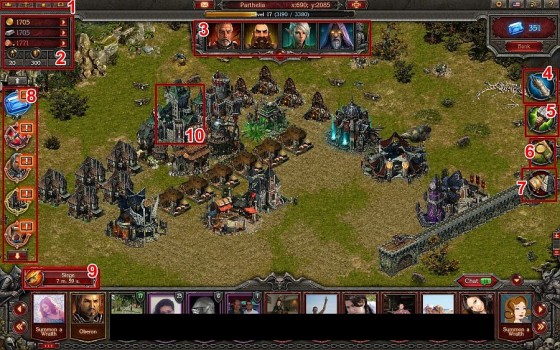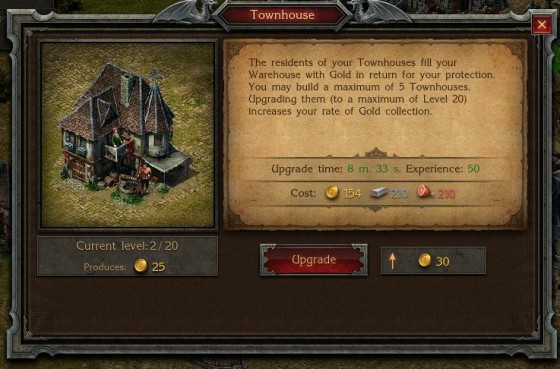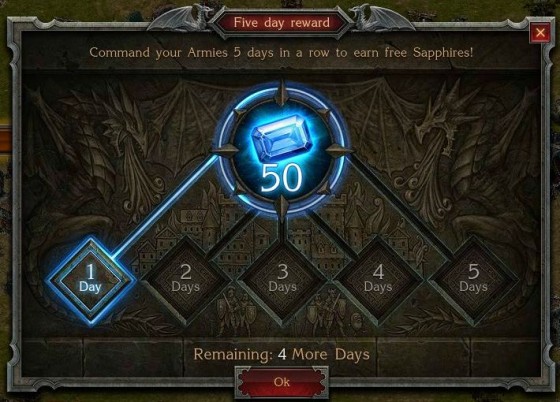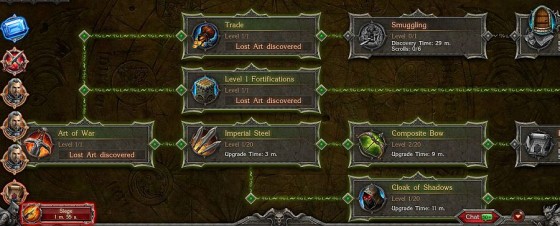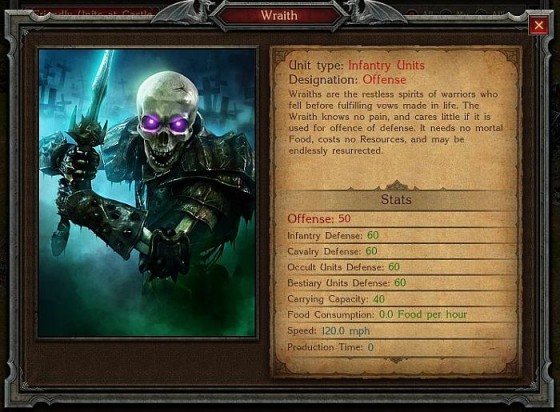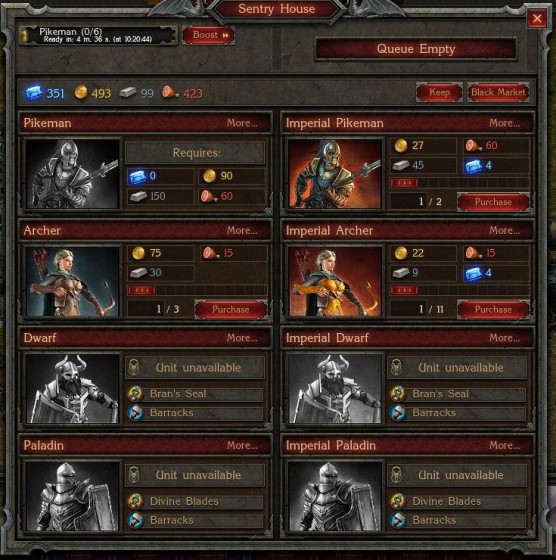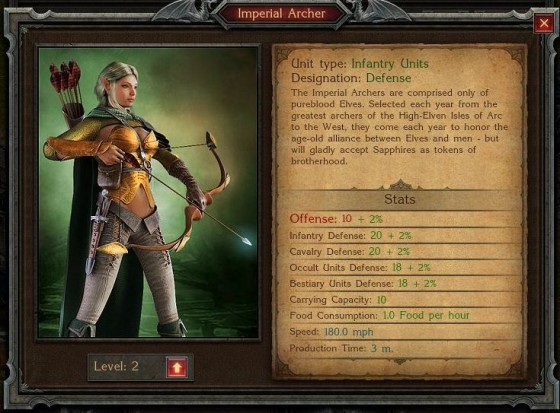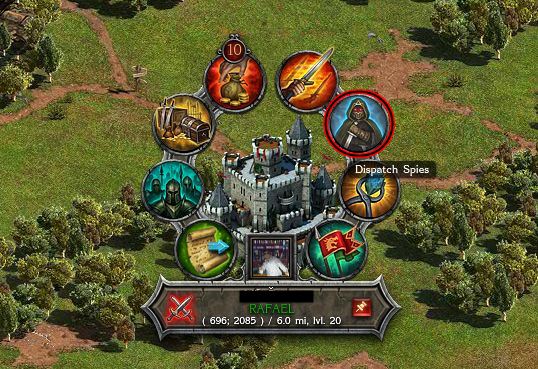Social Games
Stormfall: Age of War Guide: How to Play, Cheats & More
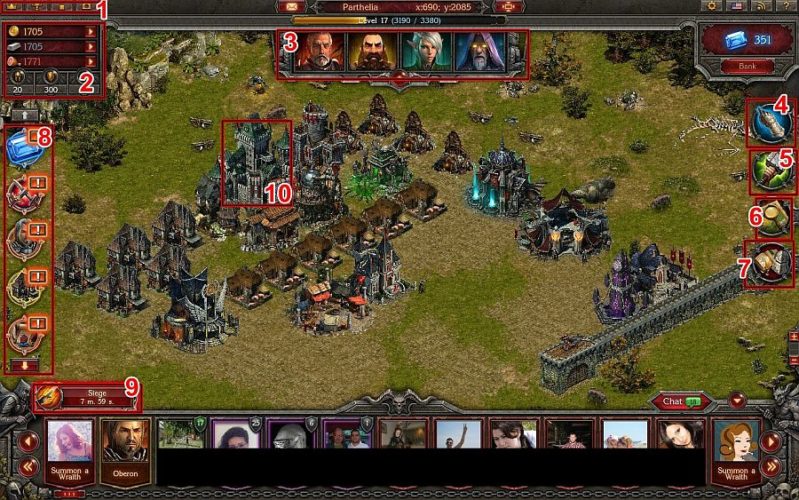
Stormfall: Age of War is a really solid strategy and castle building game available on Facebook. So if you got bored of farming and performing all those friendly tasks, it’s time to put your war helmet on and go to war. However, since this game is pretty complex and difficult, you might want to get a head start by reading Unigamesity’s Stormfall: Age of War guide, telling you how to play the game, what the buildings do and general strategy guidelines for beginners.
So let’s not waste any time, because there’s no waiting in war and let’s check out the Stormfall: Age of War guide here!
You will start with an empty area that you have to turn into a castle as soon as possible and become the biggest and best kingdom in the game. But in order to get there, you need to know your user interface flawlessly, so here it is explained:
1. Here you can access the rankings, check out the details of your profile and achievements that you have unlocked (plus requirements to unlock others)
2. All the information about the resources of your castle, units and defense. Hover your mouse over any of the indicators to get even more details about production rates and consumption.
3. Your counselors, each providing you with reports regarding what is happening in the kingdom. When they have something new to say, a scroll will appear under their name.
4. Edit the placement of your buildings
5. Access the construction menu to improve your kingdom
6. Map of the world. Here you have access to everything around you and can conduct attacks, sieges and so on.
7. Lost arts or the research option. More about it in a bit!
8. Your current missions. The ones with an exclamation mark near them are new quests.
9. Indication of an impending attack and the time left until it happens. This means that I am going to be sieged in 8 minutes…
10. You can click on each of your buildings to access their menus and get more info about what they are doing.
Resources
There are three types of resources in the game (food, metal and gold) and each of them is generated by farms, mines and townhouses respectively. You can only have a limited number of resource generating buildings and you can upgrade them. They work similar to the townhouse that I am using below as a guide:
As you can see in the image above, if you click one of your resource producing buildings, you get a window that gives you all the info that you need: the current level of the building and how much it is producing, the upgrade time and required resources for the upgrade and how much it will produce after the upgrade (near the “Upgrade” button).
You can earn more resources by hunting or scavenging around your castle and, most important, by attacking other players or battle zones, but we’ll talk more in detail about that in an upcoming strategy guide for Stormfall.
Sapphires
The Sapphires are the premium currency in the game and they are used for all sorts of premium items, like castle defenses, premium troops and boosts. You can earn sapphires by completing missions, unlocking achievements and logging in daily.
Research
Clicking the “Lost Arts” button will take you to the research part of the game. We have a “skill tree” here with various bonuses given when the research is complete. It is very important to use this research thing as often as possible for the great bonuses, but also upgrade the already researched arts to improve the bonuses they give.
Wraiths
After building the Crypt in your Castle (which should be done ASAP) you can summon Wraiths. These are free troops with pretty decent stats which can be used to defend or attack. You get one Wraith for each friend that you have added in Stormfall and there’s a maximum of 50 that you should try to get to as fast as possible because, especially early on, they offer huge advantages over other players.
Building your army
Most of the Stormfall: Age of War experience is about battling other players and building your army. This will be a pretty slow process (especially since you will get attacked pretty often), but you need to work hard and consider any defeat you take as a step forward until you have a solid army. You can build your troops in the Sentry House (at the beginning, then in all Military buildings):
The troops are divided in two units: offensive troops and defensive troops. This doesn’t mean that they are used exclusively for their role, it just means that an offensive troop has crappy defensive stats and vice-versa. However, a good strategy early on is to focus on building offensive troops and keep plundering around – but more about this in our future article with advanced strategies in Stormfall.
Clicking any of the troops that you can train (or the “more” button near their name) opens up a new window with all the statistics:
Have in mind that all troops consume food, so make sure you balance things right before you build your army!
World Map
Visit the world map to find out more about your neighbors – and new battle grounds that you can attack or defend for extra experience and resources. Also, clicking any castle of a different player shows you the options:
You can visit their castle, send spies, besiege or even send gifts. It’s up for you to decide which way to play and I am sure that whatever you choose to do, you will have a great deal of fun!
Congratulations on completing Unigamesity’s Stormfall: Age of War guide! You know now how to play the game and you are already familiar with a bit of tips, but we’ll go even more in depth with a complete strategy guide article that is coming really soon. So stay tuned with us!
UPDATE: Check out the advanced tips for Stormfall and keep an eye on the related stories below for even more guides for Stormfall!
Social Games
Ping, Not Panic: A Canadian Gamer’s 2025 Travel Stack – Steam Deck & Switch Updates, Remote Play, Con Wi-Fi Triage, and Instant Data Abroad

You’ve cleared security at YYZ with a backpack full of cables, a Steam Deck, and a wish to dodge Day-0 patch hell. Across the ocean, a con queue snakes past a venue that’s already melting its Wi-Fi. The goal is simple: play more, fiddle less. This field-tested guide gives Canadian gamers a clean travel stack—latency expectations, handheld tuning, hotspot etiquette, and a data setup that just works when you land.
Latency 101 (Know Your Ceiling Before You Chase Frames)
You can’t beat physics, but you can plan around it. Treat latency like weather: check it, adapt, win anyway.
Practical targets on the road
| Use Case | Target RTT | Bitrate Tip | Notes |
| Cloud gaming (Stadia-like/GeForce NOW) | ≤ 40–60 ms | 10–25 Mbps | Best in major metros; hotel Wi-Fi often too spiky |
| Remote Play (PS/Xbox → hotel/phone) | ≤ 60–80 ms | 5–12 Mbps | Cap at 720p/30 for reliability |
| Online shooters (native on handheld) | ≤ 40–70 ms | 3–6 Mbps | Prefer mobile data over café Wi-Fi |
| MMO/Co-op (native) | ≤ 70–120 ms | 1–3 Mbps | Slight input float is survivable |
Rule of thumb: In crowded venues, mobile data beats venue Wi-Fi for stability. Save giant downloads for hotel fiber; use cellular for sessions and comms.
Connectivity in 3 Minutes (No Kiosk Drama)
Skip airport SIM lines and roaming roulette. Install a travel eSIM at home so Discord, Remote Play, and patch checks work the second you land.
How to set it up
- Buy a plan online; you’ll receive a QR code.
- On your phone: Settings → Cellular/Mobile → Add eSIM → scan → label it Trip Data.
- Set Trip Data as Mobile Data, keep your Canadian number for calls/SMS/2FA.
- Turn Data Roaming ON for Trip Data only. Test once, then toggle data off until touchdown.
Want a simple option you can activate in minutes? Compare and set up Holafly’s esim for travelers.
If data naps after landing: Airplane Mode 10 seconds → confirm Trip Data is active → Data Roaming ON (that line only) → quick reboot.
Device Playbooks (Steam Deck, Switch, Remote Play)
Steam Deck / ROG Ally (and handheld PCs)
- Patch discipline: On hotel Wi-Fi, queue updates manually. Avoid “auto update everything” at 8 p.m. when everyone’s streaming.
- Shader cache sanity: Pre-cache big titles before you fly; it saves battery, heat, and stutter.
- Proton/version pinning (Deck): If a game breaks, roll back to the last known-good Proton. Keep a note of your stable pair.
- Performance caps: Lock to 40–45 fps with a frame limiter + half-rate vsync; drop TDP to keep temps—and fans—civilized.
Nintendo Switch
- eShop regions: Pre-download; don’t count on regional eShop switching abroad.
- Cloud saves: Confirm sync for your travel titles; manual upload before leaving home.
- RF survival: Pair controllers in your hotel room, not on the show floor where Bluetooth is chaos.
Remote Play (PS/Xbox/PC streaming)
- Encode targets: 720p/30 at ~5–8 Mbps is “it just works” on the road. 1080p/60 is hotel-fiber territory.
- Controller input: Wired (USB-C) or 2.4 GHz dongles beat Bluetooth in noisy RF environments.
- NAT hiccups: If your home router gets stubborn, enable UPnP or forward the official Remote Play ports before you travel.
Power & Thermals (The Silent Boss Fight)
- GaN charger: A dual-port 45–65W brick keeps phone + handheld happy.
- Power bank: 20,000 mAh with USB-C PD (at least 30W out) will top up a Deck on trains and in queues.
- Right-angle cables: Friendlier for hands; fewer port mishaps.
- Heat management: Pop a slim kickstand and lift the back off fabric surfaces. In flights, cap brightness and fps to cut heat and whine.
Security & Accounts (No Lockouts, No Leaks)
- 2FA: Keep your Canadian SIM active for OTPs; data rides on eSIM.
- Password manager: Ensure offline vault access for those check-in moments with bad Wi-Fi.
- VPN judgment: Use it for banking; avoid it for services that geo-fence streams/games unless you know the rules.
- Captive portals: Accept the splash page on your phone first, then tether the handheld.
Con & Tournament Survival (Queues, Badges, Backups)
- Badge & ticket hygiene: Screenshot every QR into a “Tickets” album—basements kill signal.
- Backpack loadout: Hard case for handheld, microfiber cloth, tiny stand, spare microSD, earplugs (hotel AC), cable ties for field fixes.
- Comms: Pin a Discord channel for your squad; set slow mode so plans don’t vanish in meme spam.
- Filming etiquette: Ask before filming cosplayers or booths; offer to DM selects.
Data Options: Quick Compare for Travellers
| Option | Setup | Multi-Country | Cost Predictability | Pros | Cons | Best For |
| Carrier roaming pass | None | Limited | Low | Familiar | Pricey daily caps | One-city sprints |
| Airport SIM per country | Queue | No | Medium | Local rates | Time sink + SIM swap | Long single stay |
| Pocket Wi-Fi | Pickup/return | Yes | Medium | Shareable | Extra device/battery | Groups/teams |
| Preinstalled eSIM | ~3 min | Yes | High | Land connected; keep CA number | Needs eSIM phone | Most trips |
Packing List (Gamer Edition, Carry-On Only)
- Handheld + rigid case
- 20k PD power bank + dual-port GaN charger
- Two short USB-C cables (one right-angle), 1x USB-A adapter
- Travel router (optional) to tame hotel Ethernet/Wi-Fi
- Spare microSD (formatted and empty)
- Foldable stand, microfiber, mini cable ties
- Earbuds with foam tips (better isolation on planes)
- Compact multitool (check airline rules if in carry-on)
A 24-Hour “Fly-to-Queue” Timeline (Copy & Tweak)
- T-18h (home): Pre-cache shaders, update core games, verify cloud saves, download offline maps. Install eSIM, test, then toggle data off.
- Airport: Join captive portal on phone, then tether the Deck to check for critical hotfixes.
- Flight: Battery mode: 30–40 fps cap, low brightness, story games > shooters.
- Hotel check-in: Speed test. Queue big downloads now, not at 8 p.m. when everyone’s streaming.
- Con morning: Phone data on, Discord open, badge QR ready. Handheld in case; power bank 100%.
- Evening: Batch-export clips, upload on hotel fiber; schedule posts for Canada prime time.
Troubleshooting in 30 Seconds
- Lag spike mid-fight? Drop res to 720p/30, move off congested Wi-Fi to mobile data, or stand near a window.
- Packet loss on venue Wi-Fi? Forget the network; tether to your phone.
- Deck won’t charge while playing? Use a PD port capable of >30W and a certified cable; lower TDP/fps to stay net positive.
Final Save: Play More, Fiddle Less
Travel gaming works when you make latency predictable, power abundant, and data boring. Pre-patch at home, cap frames smartly, treat venue Wi-Fi as suspect, and land with connectivity already solved. Do that—and keep your crew aligned on Discord—and your next PAX, Gamescom, or Tokyo pilgrimage will be about games, not guesswork.
Browser Games
Nerd Culture: A Fresh Social Hub for Gamers

Does gaming society need a reboot? Many people think so, with current platforms viewed by newcomers as either a mass of impenetrable content, or a world of strange and unwelcoming cliques. Nerd Culture aims to change that with a welcoming, engaging and accessible platform where all are welcome, and everyone can build their own hub, both for online celebration of all things nerdy, and for getting together offline in real life.
From PC and video gaming to board games, cosplay to fandom across movies, games and media, all areas of nerd culture are celebrated in smaller, safer hubs — including fun distractions like word games that bring people together through shared geekiness.. Places for fans to create their own spaces or join ones they feel at home in.
Features of Nerd Culture
Nerd Culture was built by a small team who felt like most of us do when facing the wall of social pressure around anything we love. It offers:
Easy and advanced group creation and search, allowing members to create, find and build groups dedicated to topics and events of interest. Note that members need to be 18+ to sign up, with fan, content creator and business categories delineating a level of interest.
Forums help create thematic communities focused on whatever is popular or niche, but important to fans with adjustable chat and feed features to help share fan voices in a reasonably-sized gathering, without being swamped by bots, trolls and other agent provocateurs. To keep them out, smart user safety features allow for intuitive moderation, chat mute and reporting tools to ensure safe social experiences.
When in the society and forum of their choice, fans can use real-time secure messaging to discuss the latest news or opinions, and collaborate in real time. Privacy settings can be customized to a level users are happy with, with privacy and safety settings that let them control who sees their content.
As part of the offline features, fans can arrange meetups and event management to link up with like-minded hobbyists in the real world, with event scheduling to promote and manage real-world events.
Fans Benefit from Rewards
To encourage engagement, contributions, responsible behavior and society-building, users can level-up their status, earning rewards through a built-in XP system. They can earn points by starting discussions, organizing events and helping people fall in love with new and familiar hobbies, unlocking levels, achievements and real-world prizes as they go.
“It’s like leveling up by helping build the community and fostering real connections,” said Nerd Culture co-founder Steven Weingarth. “Creators and members can also gain Nerd Cred for being a community advocate, and that unlocks more than just bragging rights.”
Nerd Culture is free to join and use, helping to recreate the social community of popular topics before they become swamped by low-quality content and bots. Designed for and by fans of gaming, fandom culture and creative hobbies, Nerd Culture welcomes new friends, helps them dive deeper into favorite interests or explore new worlds.
By helping users connect, discover and adventure together, with intuitive tools to help build meaningful communities, there’s plenty to see and do both online, through voice and video calls with your new buddies, and through new friends out in the real world through meetups and hangouts.
About Nerd Culture
As the founders (six lifelong nerds) put it, our new social platform sets out to fix the most frustrating problem: Why is it so hard, even in giant cities like LA, to find people who share my niche interests?
“When I moved to LA, I was shocked by how difficult it was to find a D&D group. Sites upon sites, Discord invites, bouncing between Reddit threads and Meetup and Facebook groups” writes Co-Founder Steven Weingarth. “It felt like yelling into a void. So our team set out to build the platform we all wish existed — a single place to connect and share stories with people over the things we love.”
Whatever your experience, many of us have felt unwelcome or overwhelmed in one place or another. Nerd Culture aims to offer a welcome hand to the nervous, or a new platform that we can build to create a more welcoming space about the topics we love.
Social Games
The Psychology of Slot Games: Why We Love to Spin the Reels

Many people across the world are drawn to play slot games; they spin the reels for a chance to win big prizes. Explaining this concept in detail will uncover the reason why players like these games so much and why we keep coming back to them.
The Reward Mechanism
Slot game psychology relates directly to the brain reward system. Players get a rush of dopamine — a pleasure-linked neurotransmitter — not just when they win but also for near misses and losses. Combining loss and win in a facade of unpredictability, where the player cannot know what the result is going to be, creates anticipation. This specific mechanism is known as a variable ratio schedule of reinforcement, and it works by rewarding players at random intervals, which creates the feeling that any given spin could lead to a potential reward.
Sensory Stimulation
Slot games are fully designed for the eye and ear of the player. The gameplay is built around colours, engaging animation, and immersive audio effects that make the game enjoyable. All these sensory elements are designed to trigger emotional reactions and enhance involvement. Sounds like coins falling in sequence or celebratory music playing after a win creates a feeling of achievement which encourages further play. This sensory experience is not only for entertainment, but also to deepen the player’s emotional investment in the game.
Emotional Escape
Indeed, many players play slot games as a method of escapism. Different game mechanics help individuals tune out from the challenges of daily life. This can create what players call the “slot-machine zone,” when they are so focused on the game that they forget everything else. For some, the escape may be therapeutic, a way to relieve bad feelings. But players should not count on slots as a major way of dealing with challenges in life.
The Role of Near Misses
One incredibly interesting part of the way slot games have been designed revolves around near misses — where a player comes very close to winning but ultimately does not. Studies show that near misses can be just as psychologically rewarding as actual wins because they activate similar dopamine responses in the brain. Thus, players feel that they are “due” for a win, pushing them to keep playing, hoping that one day they will hit that jackpot.
Online Slot Machine Strategies
Some players like to try using Online Slot Machine Strategies every time to win more with an impressive payback percentage. Such strategies include bankroll management, playing games with high RTP, and limiting playtime. Although these strategies might play a part in reducing your risk or possibly helping with the overall game experience, they do not actually change your odds of winning because slots are always random. However, knowing how to approach a hand can give players a feeling of control and, thus, confidence, which is a psychological advantage.
Socializing and Competition
Besides playing individually, many modern slot games have social elements, such as leaderboards or multiplayer functions. These elements also help create a community among players, as well as the introduction of competition. Thus, gamers may be motivated to keep playing not only for their own entertainment but also to score better than others or to achieve higher ranks and recognition gain in gaming communities.
Conclusion
The psychology behind slot games boils down to reward mechanisms, sensory appeal, escapism/emotion, and social interaction. With the advancement of technology, it is important for developers to understand these concepts in order to create enticing experiences and for players to practice responsible gaming. For players looking to enhance their experience, using online slot machine strategies can provide a sense of control and strategy, though it’s crucial to remember that these strategies do not guarantee wins. As you spin the reels, such an experience can be exhilarating. However, you need to be aware of the psychological effects of having a healthy relationship with gambling.
-

 Guides6 years ago
Guides6 years ago6 Proven Ways to Get more Instagram Likes on your Business Account
-
Mainstream11 years ago
BioWare: Mass Effect 4 to Benefit From Dropping Last-Gen, Will Not Share Template With Dragon Age: Inquisition
-

 Mainstream7 years ago
Mainstream7 years agoHow to Buy Property & Safe Houses in GTA 5 (Grand Theft Auto 5)
-

 Guides1 year ago
Guides1 year agoFree Fire vs PUBG: Comparing Graphics, Gameplay, and More
-

 Casual2 years ago
Casual2 years ago8 Ways to Fix Over-Extrusion and Under-Extrusion in 3D Printing
-
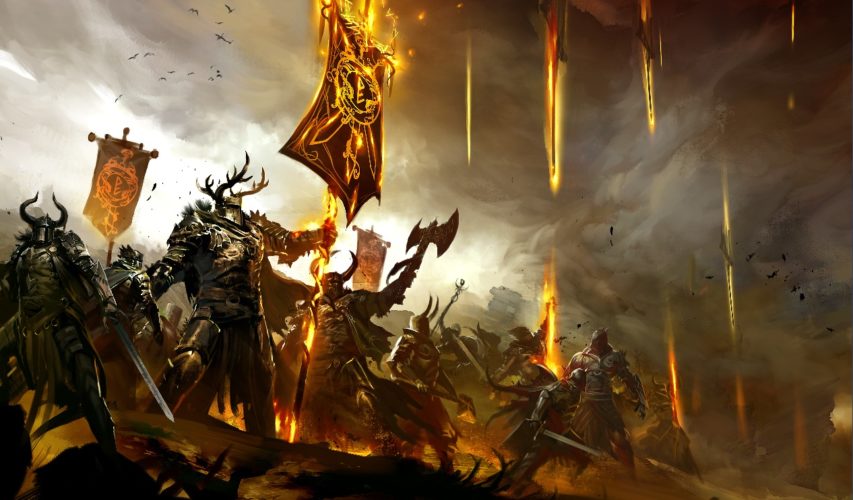
 Mainstream13 years ago
Mainstream13 years agoGuild Wars 2: The eSports Dream and the sPvP Tragedy
-

 Other2 years ago
Other2 years agoAjjubhai UID: Free Fire Details & Earnings
-

 Gaming News2 years ago
Gaming News2 years agoSwiping, Tapping, and Tilting: How Mobile Games Are Played Today

